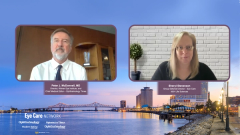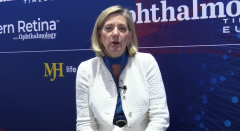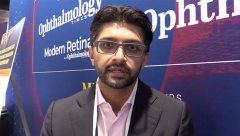
Harvesting limbal stem cells from healthy eyes to treat corneal blindness
Ula V. Jurkunas, MD, discusses a presentation she gave recently at the American Academy of Ophthalmology’s 2022 annual meeting in Chicago on the use of limbal stem cells to treat corneal blindness.
Episodes in this series

Video transcript
Note: This transcript has been lightly edited for clarity.
David Hutton, Ophthalmology Times: I'm David Hutton of Ophthalmology times. I'm joined today by Dr. Ula Jurkunas, who is here to talk about limbal stem cells to treat corneal blindness. This is such an interesting topic. I'm interested to hear what you have to say about tell us about your presentation.
Ula V. Jurkunas, MD: Thank you very much, David. We are very excited to be heading the first-in-the US clinical trial on replacing limbal stem cells by cultivating them from the healthy eye. The surgery that we do is called cultivated autologous limbal epithelial cell transplantation. And again, this is a first trial in the U.S. to use cell therapy to treat corneal blindness. We are currently enrolling patients and are in the process of quantifying the data of the enrolled patients. But we are very proud to have developed this technology with our collaborators from Dana Farber and Children's Hospital here in Boston, and to be able to run this one single center trial to introduce a very novel technology for our patients.
David Hutton: What's the next step for this research?
Ula V. Jurkunas, MD: So, our preliminary data shows very promising results. And also, our trial is showing that the procedure is safe and feasible. So our next steps would be to provide this procedure to a broader population, such as other surgeons and other sites could be cultivating limbal stem cells for transplantation for their patients.
David Hutton: Ultimately, what can this mean for ophthalmologists and the patients they treat?
Ula V. Jurkunas, MD: I think this is very exciting technology that can serve as a stepping stone for other cell therapies for different portions of the eye and the body. This was a low hanging fruit because we are able to manufacture autologous stem cells that are easily accessible from the corneal limbus of the healthy eye. But this could mean that we could be doing other therapies in the future such as corneal endothelial cell therapy, retinal cell therapy, and many others.
Newsletter
Don’t miss out—get Ophthalmology Times updates on the latest clinical advancements and expert interviews, straight to your inbox.


















































.png)


